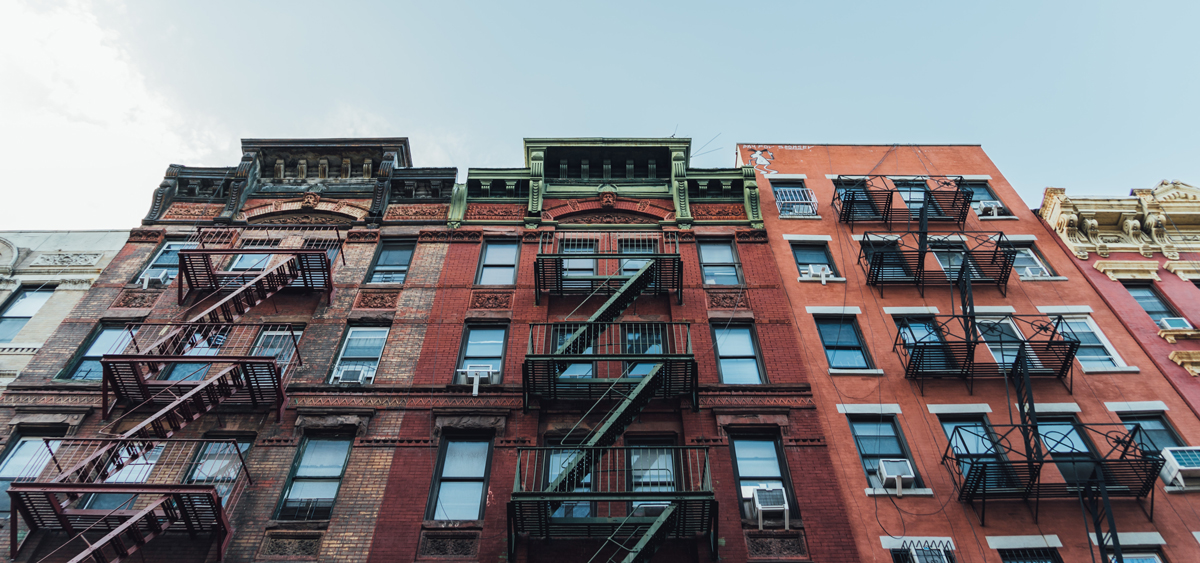
A Shared Future for Housing
June 4, 2019 — The Big Picture
With 8.5 million people, New York City’s population is at an all-time high, and projected to increase to 9 million by 2040. It is a sign of the city’s health and vitality that a growing number of people want to come to New York City, choose to stay and raise their families or grow old here. Although our city’s housing stock is also at a record high, it still isn’t enough to house our growing population, and we continue to face a fundamental problem of supply and demand that has resulted in an acute affordability crisis.
Despite the overall increase in the supply of housing, rents continue to rise. Between 2014 and 2017 we saw about 130,000 fewer units overall in the bottom half of the rent distribution—those with rents below $1,500. [1] Although New York City may be known as one of the largest and richest cities, almost 20% of New Yorkers live below the poverty level. [2] More than half of New Yorkers—56%—are rent-burdened, meaning they pay more than a third of their income in rent; and 32% of New Yorkers are severely rent-burdened, or paying more than half of their income in rent. [3] In today’s New York City, you need to earn nearly $35 an hour to afford a market-rate two-bedroom unit and not be rent-burdened.[4]
Tackling the housing crisis is a top priority, and the City is working on every front to ensure New Yorkers can afford to live and thrive in this city. The de Blasio administration has committed unprecedented resources to build and preserve 300,000 affordable homes by 2026. Since the Mayor’s Housing New York plan launched in 2014, the City has financed more than 122,000 homes, a full 40% of which serve New Yorkers making less than 50% of Area Median Income[5] ($48,050 for a family of three in 2019).[6]
But we aren’t just adding affordable housing, we are looking to create a broader range of housing types to meet the needs of New York’s changing demographics. The housing crisis is felt particularly strongly by small households: while such households make up the majority of NYC’s population (approximately 67%), studio and 1-bedroom apartments make up only 45% of the City’s housing stock. This mismatch places pressure on small units and can lead to small households doubling up with roommates in larger apartments, which in turn places pressure on larger households.
While we can begin to address this mismatch by building more studios and one-bedroom apartments, we also believe we need to explore new models. This includes construction methods and unit types that can help us lower costs and stretch our public investment to both create more affordable housing and more deeply affordable housing. Such unit types include micro units, as well as shared housing—private rooms with shared facilities like kitchens and bathrooms.
Historically, shared housing has been a critical source of low-cost housing to countless New Yorkers. In the middle of the 20th century, hundreds of thousands of New Yorkers lived in shared housing, often in the form of single-room occupancy (“SRO”) buildings. Concerns regarding substandard conditions, however, gave rise to new laws and programs that restricted the creation and occupancy of this housing model. Such rules not only slowed the creation of new shared housing developments, but also discouraged investment in those that remained.
In 2018, we launched ShareNYC to take another look at this historic model to see if we could reimagine it as a new form of affordable housing for New Yorkers. Through a first-of-its-kind Request for Expressions of Interest and Request for Information, we are soliciting information about, and proposals for, the design, financing, and management of affordable shared housing in New York City. By gathering input and specific development proposals from advocates, service providers, and development teams, we hope to advance real projects that demonstrate how shared housing can both provide quality living spaces and address unmet housing needs across New York City. Additionally, through taking a hard look at current laws regarding shared housing, we are considering reforms that can improve protections and safety for tenants currently living in de facto shared housing.
Looking ahead, we hope this housing model can help address the needs of a range of households. From teachers and healthcare workers commuting from the outer boroughs, to aging, formerly homeless adults living on fixed incomes, shared housing can help small households find stable and secure housing in a wider range of neighborhoods.
Our work on ShareNYC builds on a long tradition in New York City of pioneering new housing policies and practices to meet the demographics of today and tomorrow. Through this model, we hope to not only expand our own toolkit for creating quality, affordable housing, but to demonstrate approaches that may be useful to other cities as well.
1. Gaumer, E. Selected Initial Findings of the 2017 New York City Housing and Vacancy Survey. New York, NY: New York City Department of Housing Preservation and Development; 2018.
2. Chatterjee, D., Krampner, J., Shin, J., Virgin, V., Li, C., & Li, E. New York City Government Poverty Measure: 2005 – 2016. New York, NY: New York City Mayor’s Office of Operations; 2018.
4.Aurand, A., Emmanuel, D., Yentel, D., Errico, E., Gaby-Biegel, J., & Kerr, E. Out of Reach: The High Cost of Housing. Washington, DC: National Low Income Housing Coalition; 2018.
5.New York City Department of Housing Preservation and Development. (n.d.). Housing New York: By the Numbers. Retrieved May 30, 2019, from <https://www1.nyc.gov/site/hpd/about/housing-new-york-by-the-numbers.page>.
6.New York City Department of Housing Preservation and Development. (n.d.). Area Median Income (AMI). Retrieved May 30, 2019, from <https://www1.nyc.gov/site/hpd/renters/area-median-income.page>.